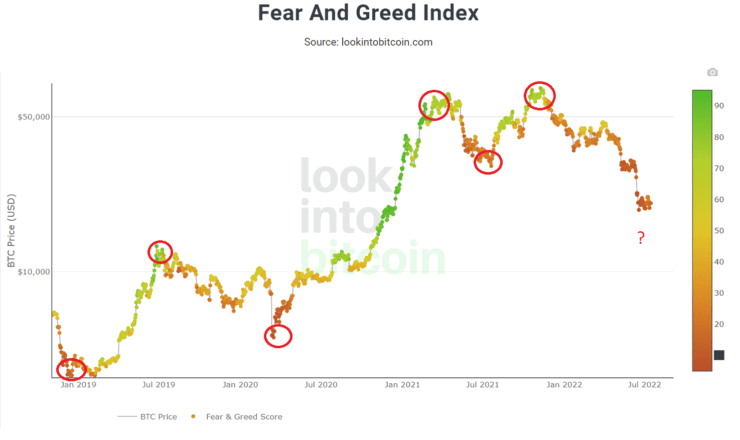Understanding the Bitcoin Fear & Greed Index
The Index is a helpful tool that, combined with other indicators, can help you decide when to buy and sell bitcoin.

Key Takeaways
- The Index uses multiple factors to measure market sentiment through a score.
- Understanding the Fear and Greed index can help investors decide when is the right time to buy or sell bitcoin.
- Critics of the Index say it’s not a forward-looking tool.
Share this article
The Fear and Greed Index is a tool that measures crowd psychology in the Bitcoin market. This overall feeling of investors towards the state of the market is also known as market sentiment.
Why Fear and Greed?
Fear and greed are two predominant emotions in human psychology that can influence investor behavior. The Bitcoin market is no exception to this. Hence why market sentiment awareness is important to helping us decide the right time to enter or exit a position.
On the surface, investors generally follow the Index based on the theory that excessive fear tends to drive down the price of bitcoin and too much greed pushes the price up.
The assumption is that extreme fear increases selling pressure for bitcoin, driving the price down and presenting a buy opportunity for investors. On the other hand, extreme greed drives up the demand for bitcoin, hiking up the price and offering a good selling opportunity.

The Index accumulates data from multiple sources to generate a number. This number is measured on a scale ranging from 0 to 100, where 0 indicates maximum fear and 100 total greed.
Within the 0 to 100 scale, the Index is classified in four basic categories:
0 to 24 = Extreme Fear,
25 to 49 = Fear,
50 to 74 = Greed,
75 to 100 = Extreme Greed.
At the same time, the Index extracts data from the following sources to calculate the score:
- Volatility, which compares the current value of bitcoin to its average value over the last 30 days and the last 90 days.
- Market momentum and volume of bitcoin traded over the last 30 and 90 days.
- Social media sentiment, or what people are saying about bitcoin on social media.
- Bitcoin’s share of the crypto market against all the other cryptocurrencies (also known as Dominance).
- Search trends across relevant Bitcoin search terms to identify substantial periods of growth or decline.
The Bitcoin Fear and Greed Index, a variation of the original Index developed by CNN Markets, can suit investors with different time horizons as it gathers data daily, weekly, monthly, and yearly.
So whether you’re a day trader or a cyclical investor, you can easily fit the Index to your strategy.
However, one type of investor believes that acting against those emotions can outperform the market: the contrarian investor.
Contrarian investors act against the herd. When the market sells due to fear, they enter a position. When there’s a general sentiment of greed and everyone else is buying, contrarians find an opportunity to exit the market as prices rise.
Is the indicator reliable?
The answer to this question is in the data. Lookintobitcoin.com gives investors insight into how the Index has historically interacted with the price of bitcoin.

As seen in the above chart, the Index is an optimal indicator for anticipating local tops and bottoms and for timing shifts in the direction of the Bitcoin market. However, it doesn’t specify at which price points such shifts will occur.
One specific claim from critics of the metric is that it’s not a forward-looking tool and can be particularly risky if used repeatedly in the short term.
An investor who decides to pull the trigger when the state of the market is signaling extreme fear might be entering the market at the start of a lengthy bearish period.
If trading the crypto markets were as easy as just following crowd sentiment, we would all be winners. That’s why the Index is most effective in predicting broader trends.
In conclusion, beware of using only this single indicator to make any investment decisions. One should use it along with a combination of other technical, fundamental, and on-chain metrics, especially during the uncertain macroeconomic environment we are going through.
If you don’t know where to start your bitcoin trading journey, why not invest in yourself first? Phemex Academy has an ample technical analysis section where you can learn how seasoned investors trade bitcoin successfully. You can even practice with their Crypto Trading Simulator before trading with real money.
